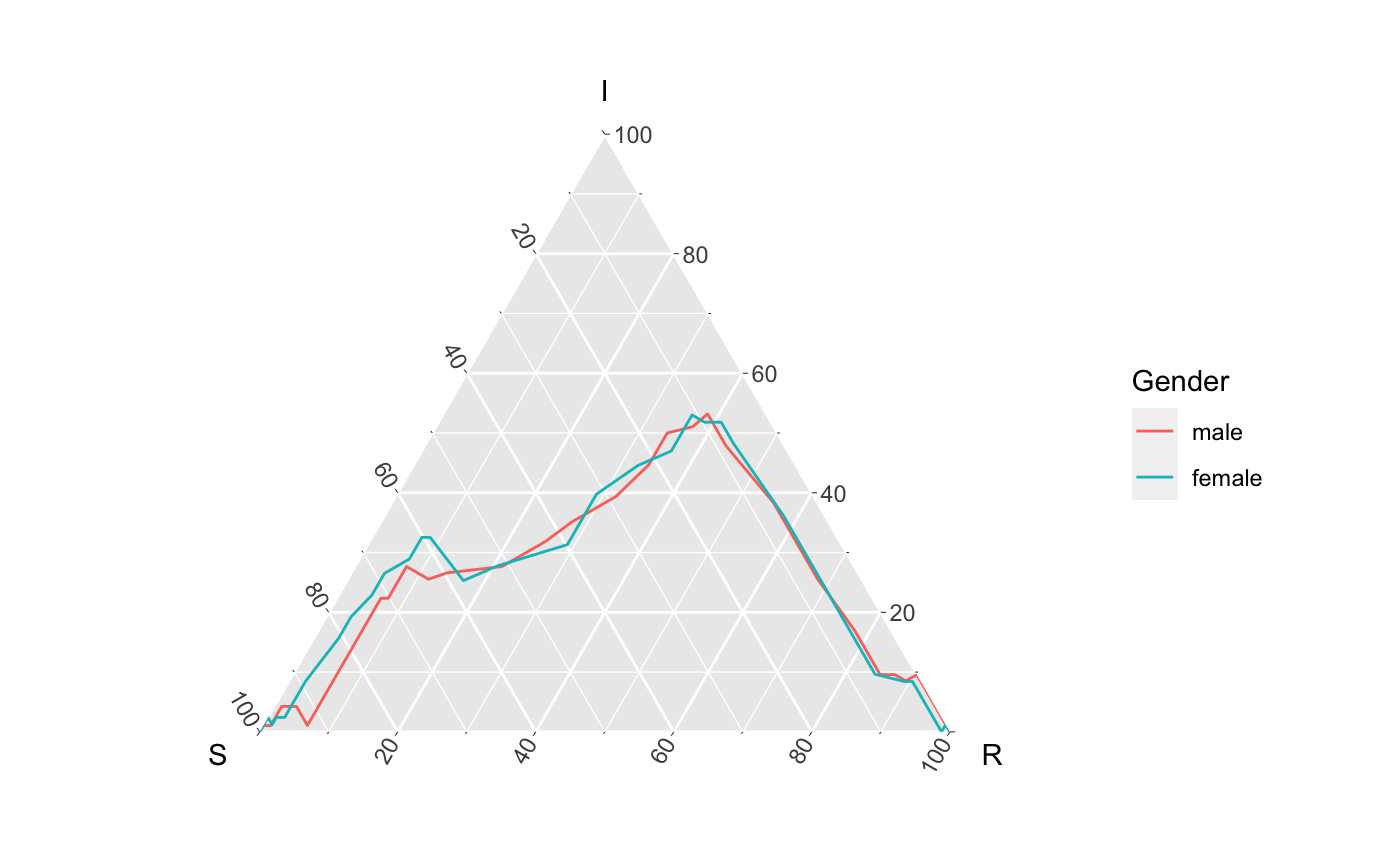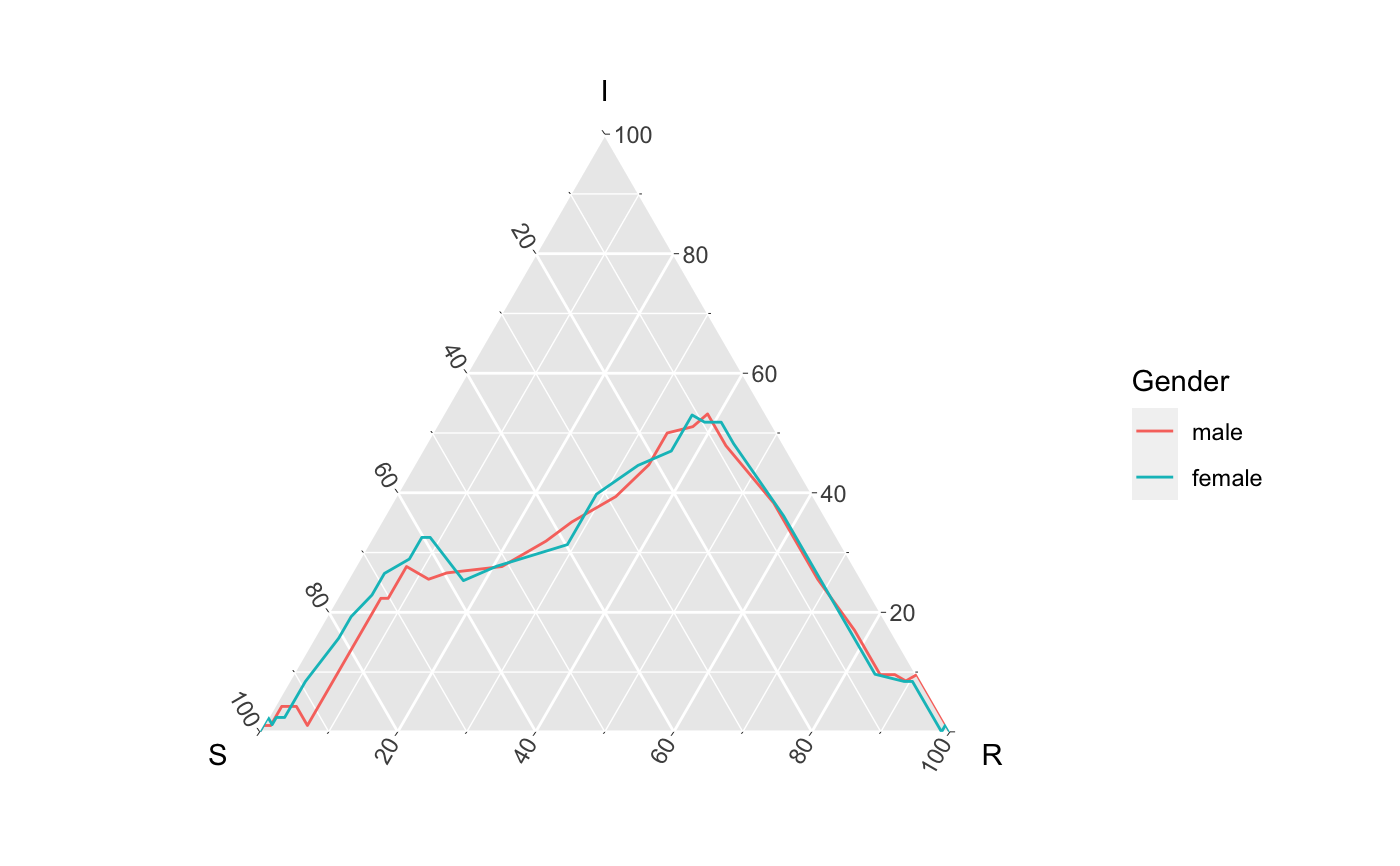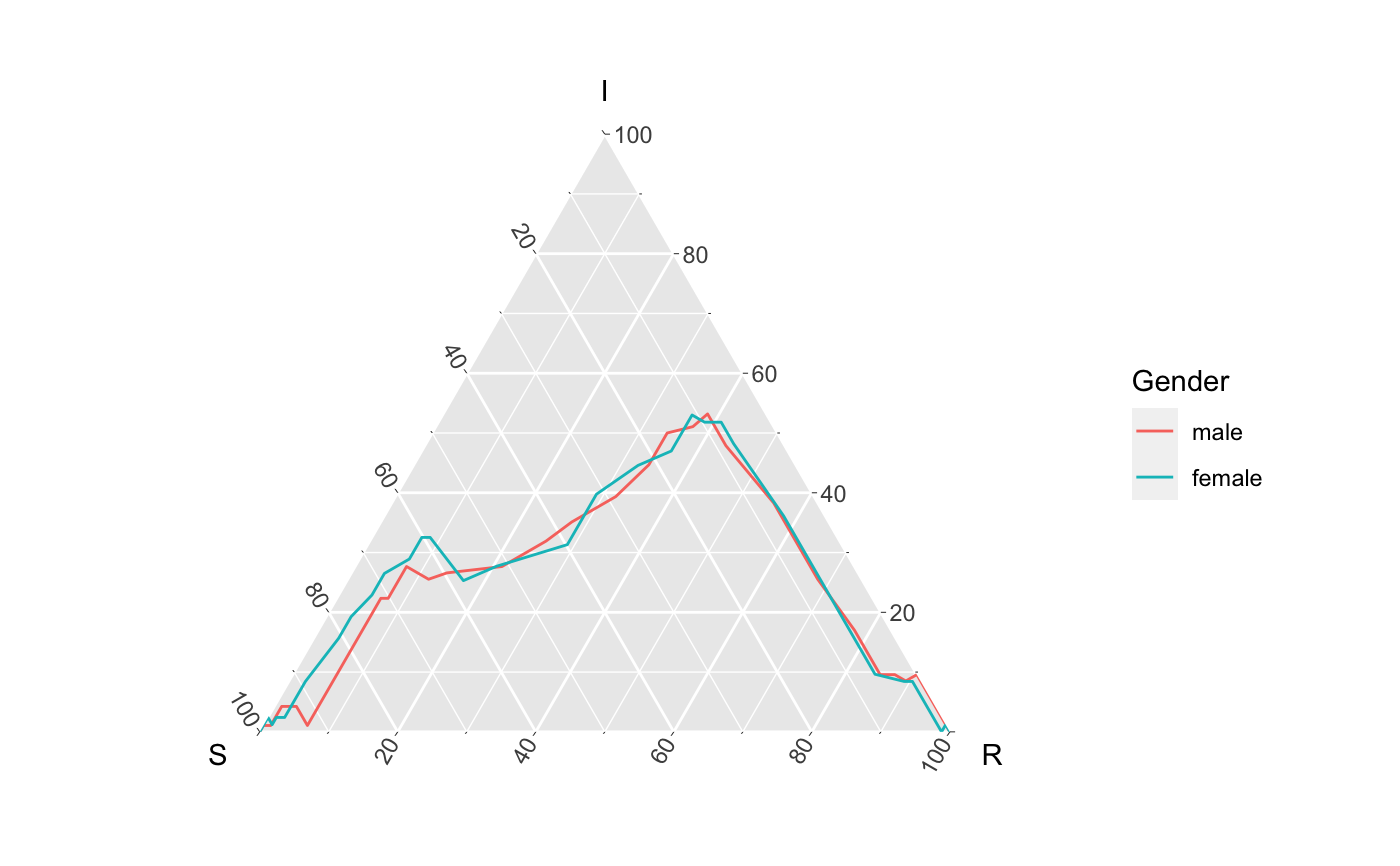aggregate SIR path visuals from agent data
Source:R/geom-aggregate.R, R/stat-aggregate.R
stat_aggregate.Rdaggregate SIR path visuals from agent data
geom_aggregate( mapping = NULL, data = NULL, stat = StatSirAggregate, position = "identity", ..., na.rm = FALSE, show.legend = NA, inherit.aes = TRUE ) stat_aggregate( mapping = NULL, data = NULL, geom = "path", position = "identity", na.rm = FALSE, show.legend = NA, inherit.aes = TRUE, ... )
Arguments
| mapping | Set of aesthetic mappings created by
|
|---|---|
| data | The data to be displayed in this layer. There are three options: If A A function will be called with a single argument, the plot data. The return value must be a data.frame, and will be used as the layer data. A function can be created from a formula (e.g. ~ head(.x, 10)). |
| stat | Override the default connection between |
| position | Position adjustment, either as a string, or the result of a call to a position adjustment function |
| ... | Other arguments passed on to |
| na.rm | when using the default Stat or Geom this parameter doesn't matter
as If not using either of these (which means this geom/stat doesn't need to be
used), then if |
| show.legend | logical. Should this layer be included in the legends?
|
| inherit.aes | If |
| geom | Override the default connection between |
Details
This visual leverage the function agents_to_aggregate
underneath. This function converts individual agents' information on when the
agent transitions between 3 different states (ordered), to create a temporal
tally/aggregation of how many agents are in what state at each integer time
point. In this visualization tool, the user provides y and z to
present the agent enters the second and third state (respectively).
As mentioned in parameter details, agents_to_aggregate encodes
NA to capture information, and as such, the default
Aesthetics
yraw time when initially infected (or more generally when the agent enters the second state)zraw time when started recovery (or more generally when the agent enters the third state)group...
Learn more about setting these aesthetics in
vignette("ggplot2-specs").
Examples
library(ggplot2) library(dplyr) library(ggtern); EpiCompare:::update_approved_layers() # ^ this generally need not be done # geom_aggregate EpiCompare::hagelloch_raw %>% filter(SEX %in% c("male", "female")) %>% ggplot(., aes(y = tI, z = tR, color = SEX)) + geom_aggregate() + coord_tern() + labs(x = "S", y = "I", z = "R", color = "Gender")#># stat_aggregate EpiCompare::hagelloch_raw %>% filter(SEX %in% c("male", "female")) %>% ggplot(., aes(y = tI, z = tR, color = SEX)) + geom_path(stat = StatSirAggregate) + coord_tern() + labs(x = "S", y = "I", z = "R", color = "Gender")#>EpiCompare::hagelloch_raw %>% dplyr::filter(SEX %in% c("male", "female")) %>% ggplot(., aes(y = tI, z = tR, color = SEX)) + stat_aggregate(geom = "path") + # note geom = "path" is the default coord_tern() + labs(x = "S", y = "I", z = "R", color = "Gender")#>


